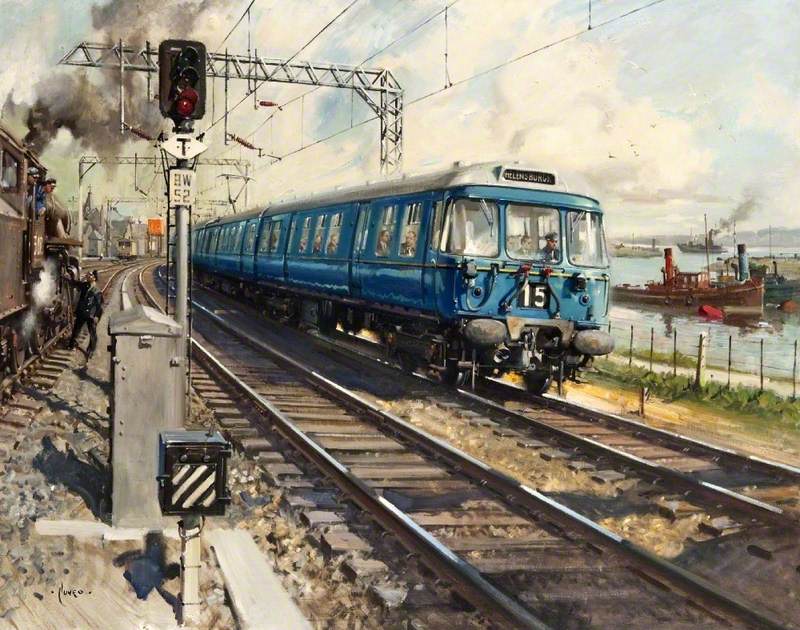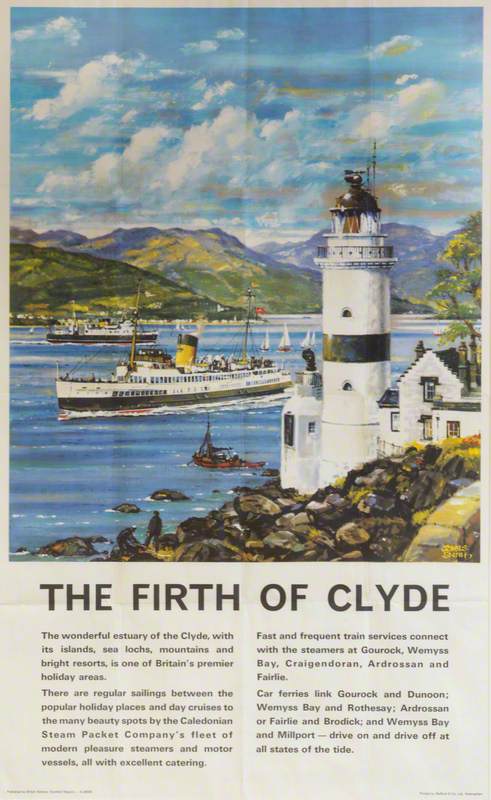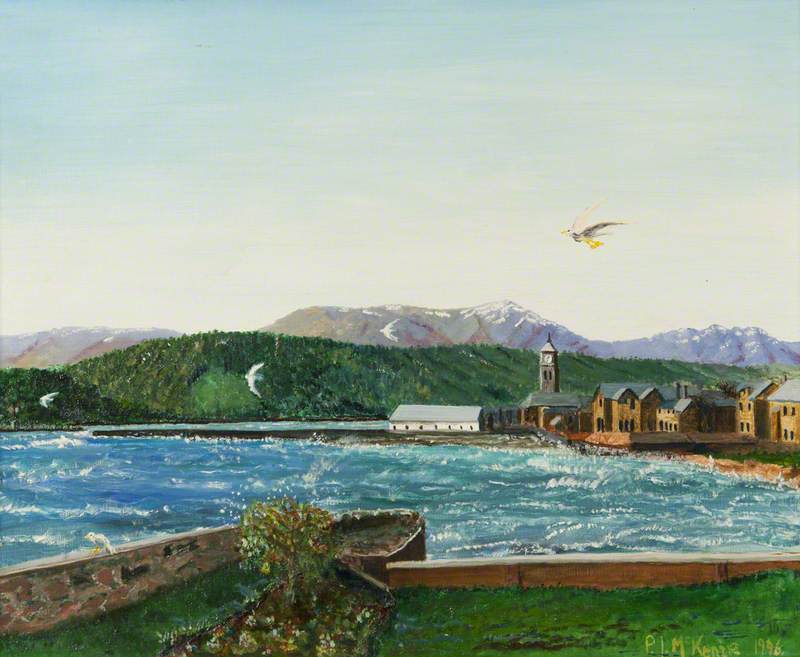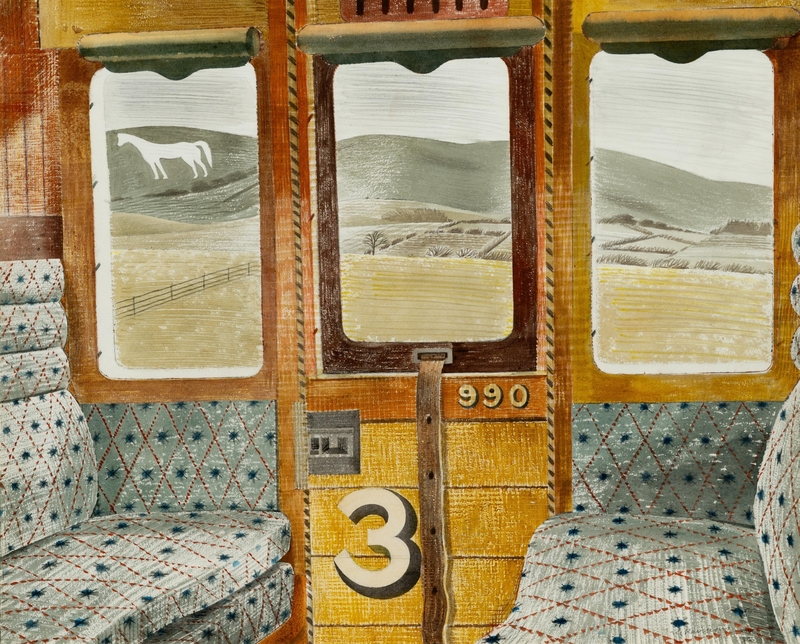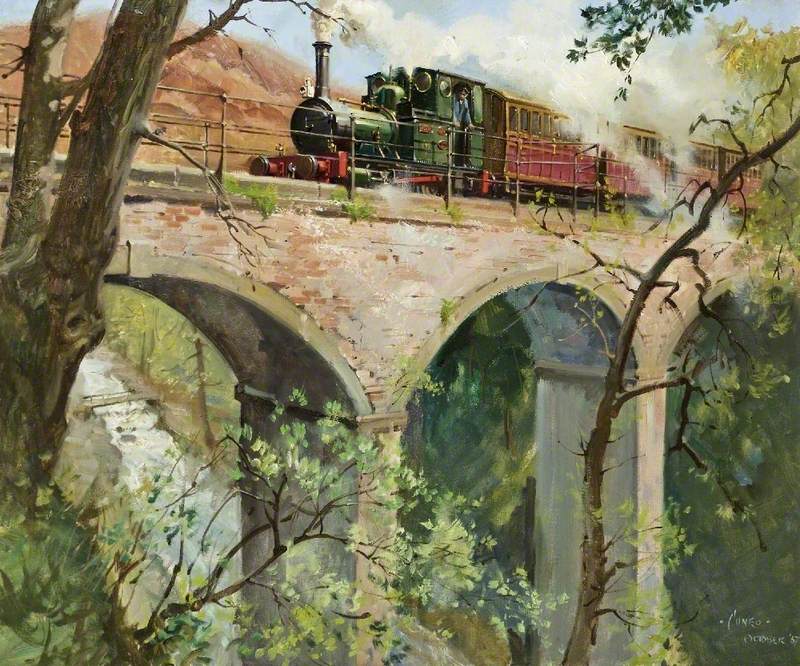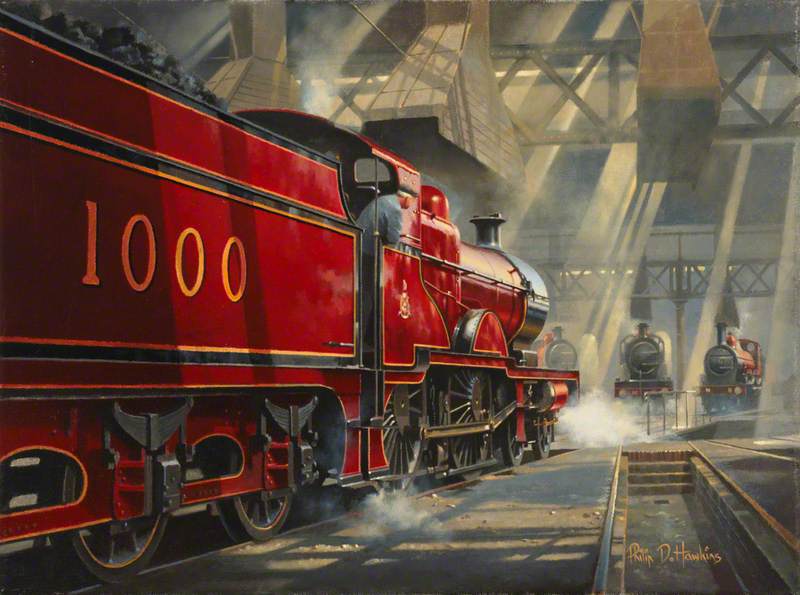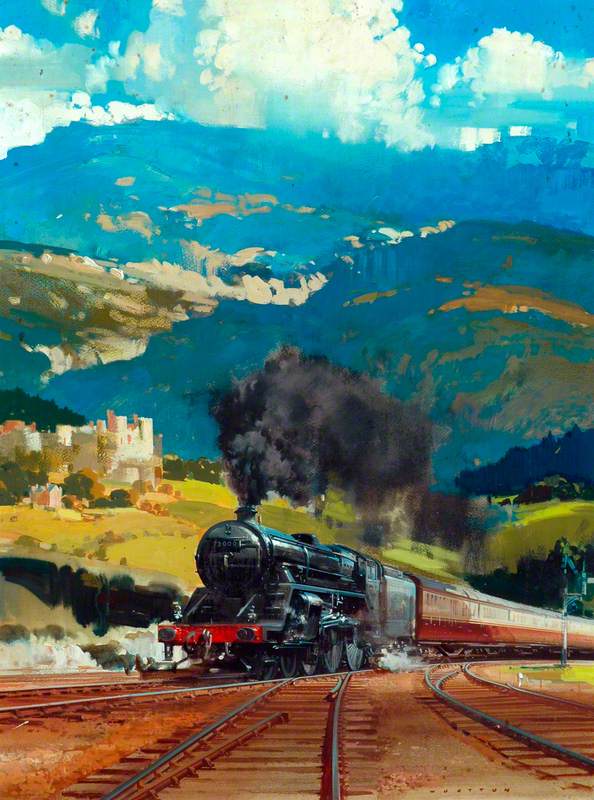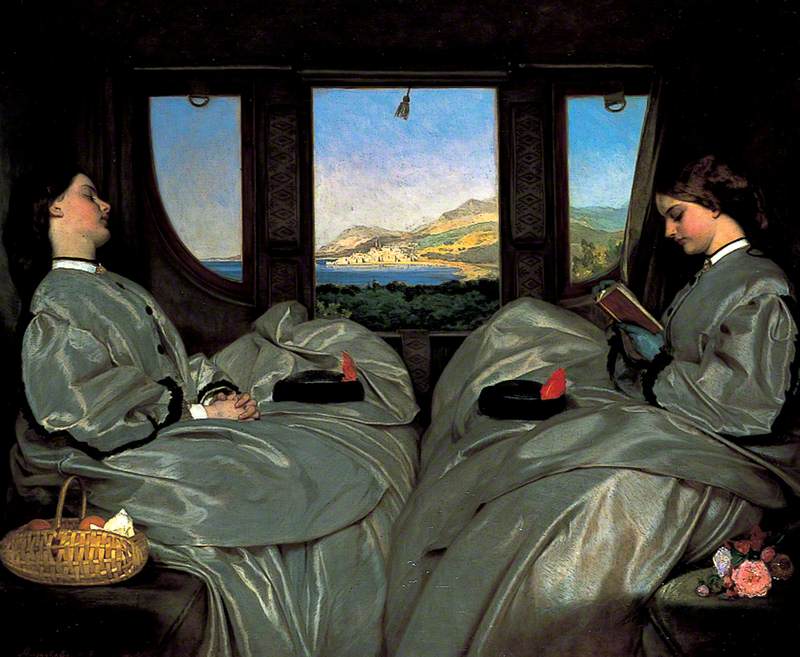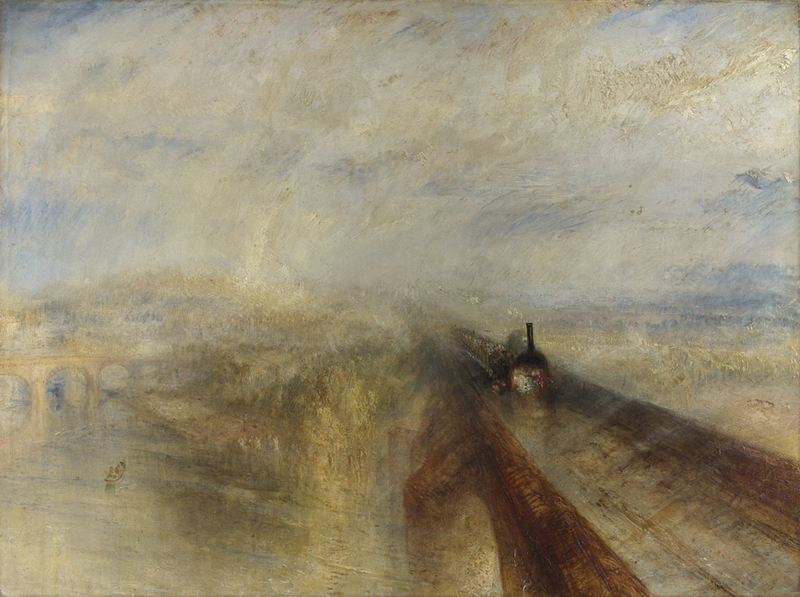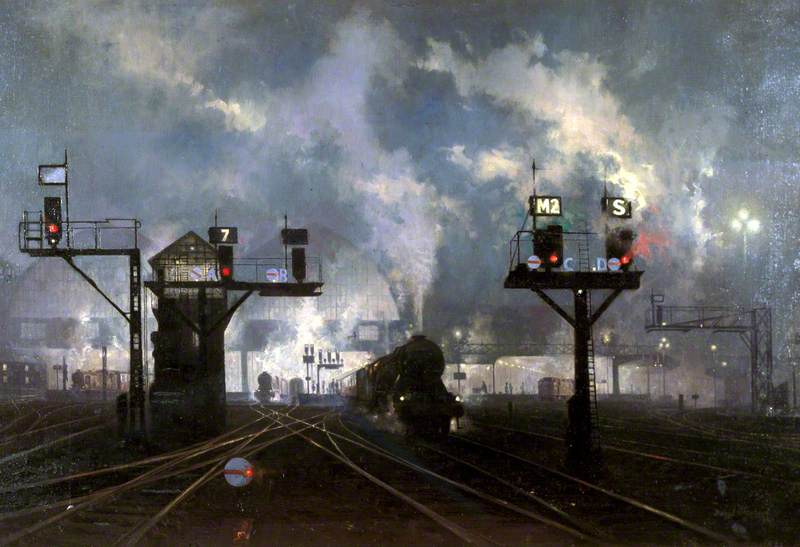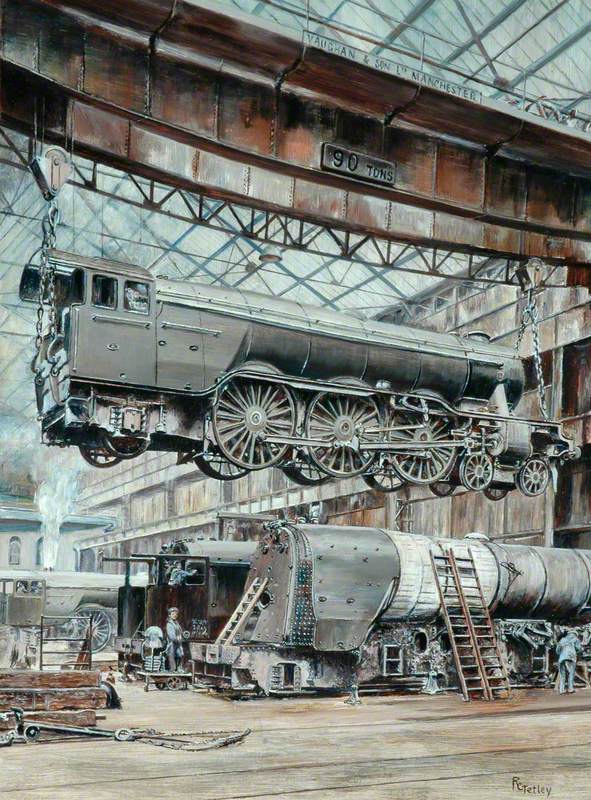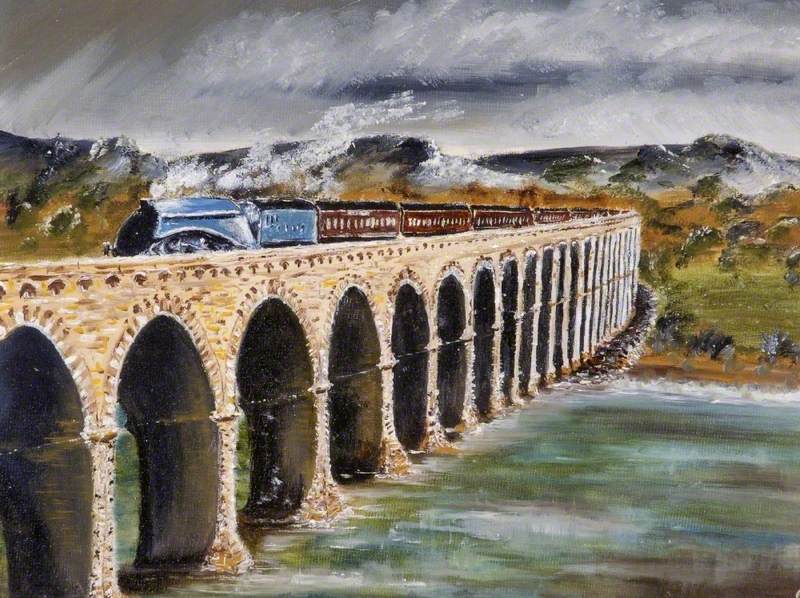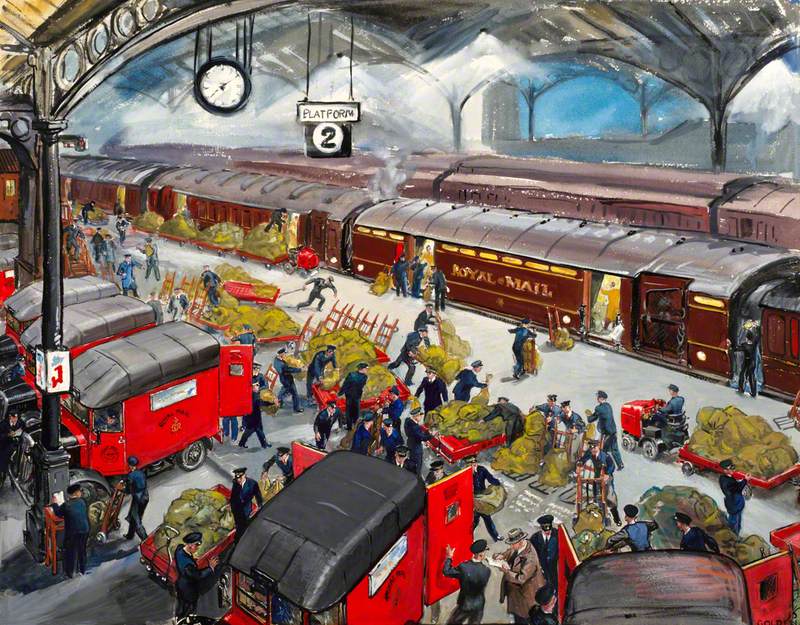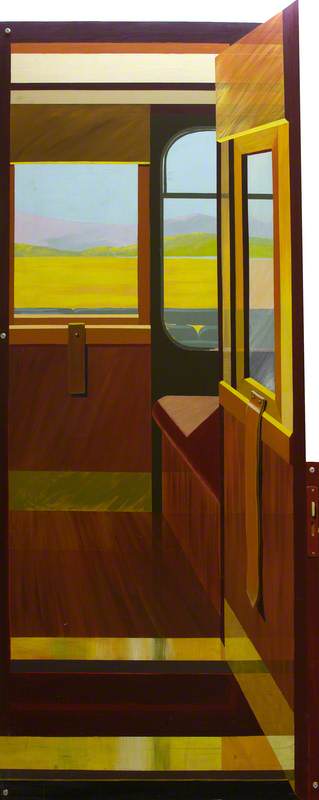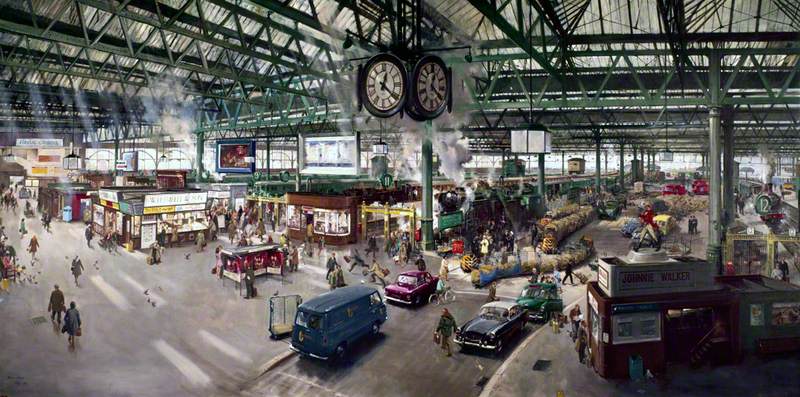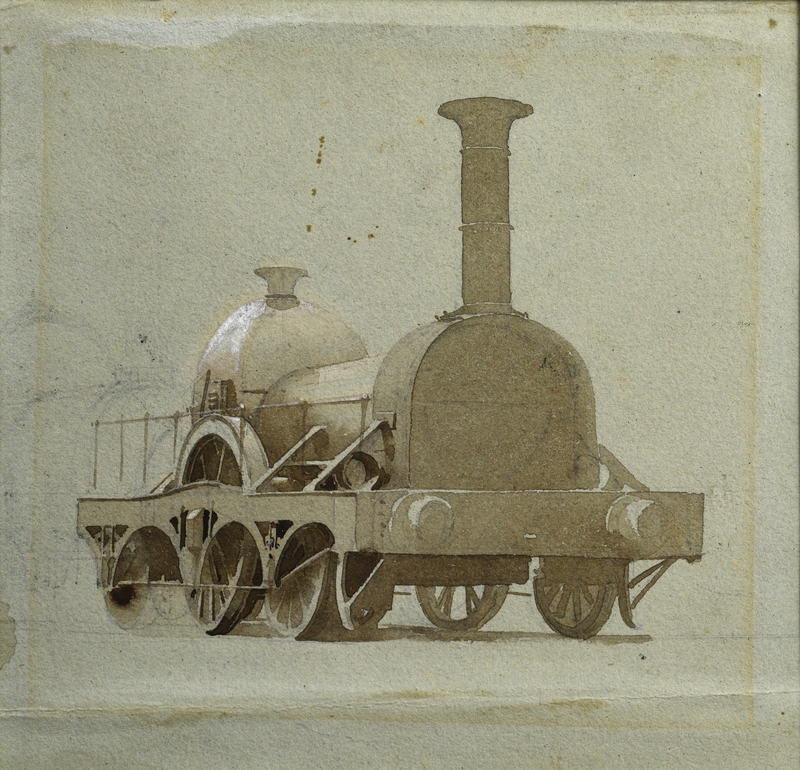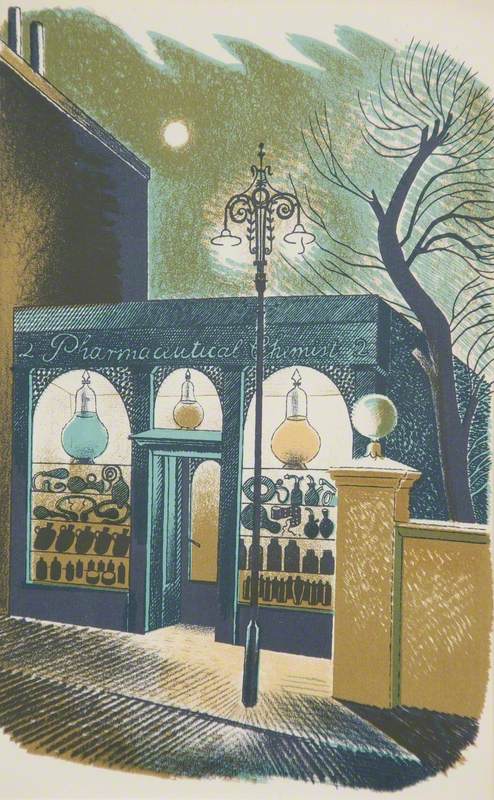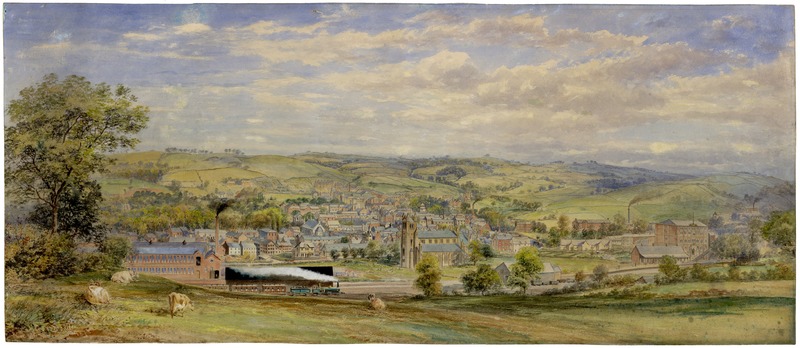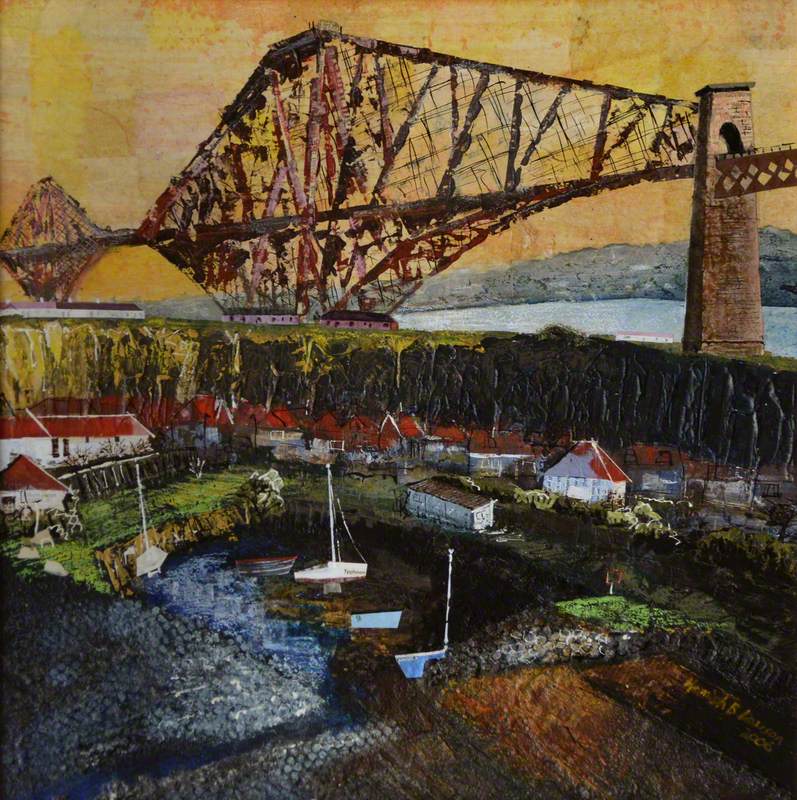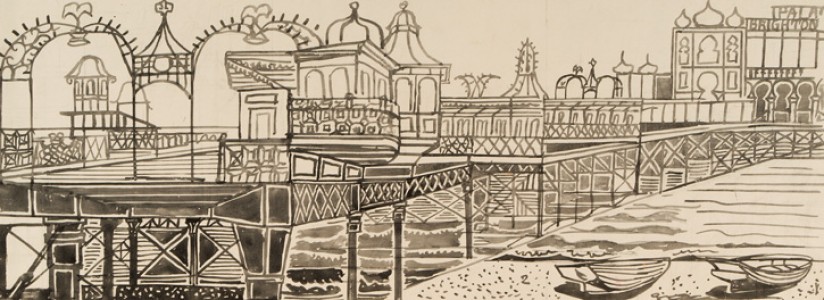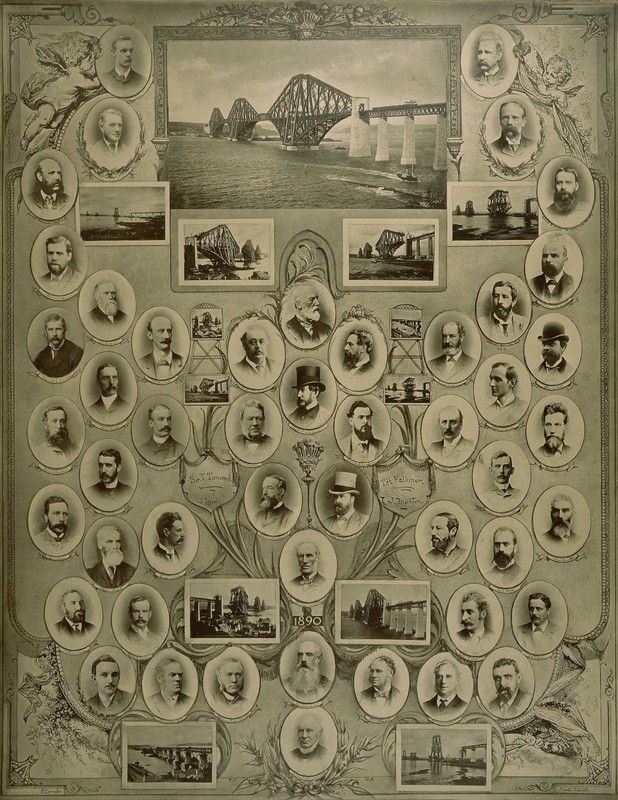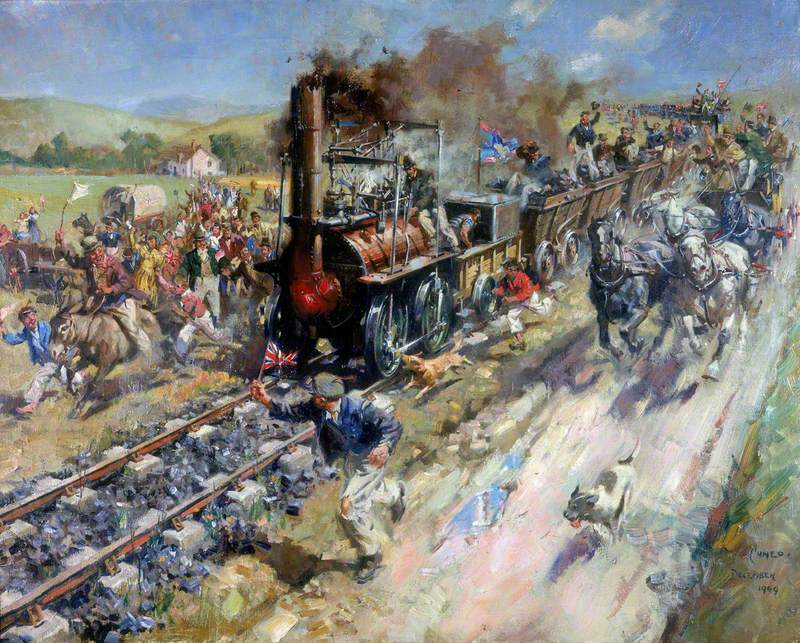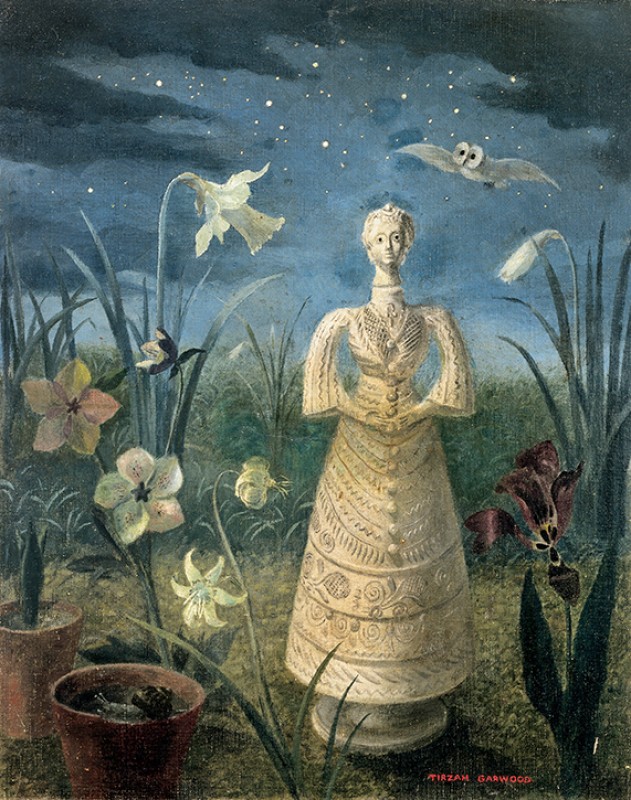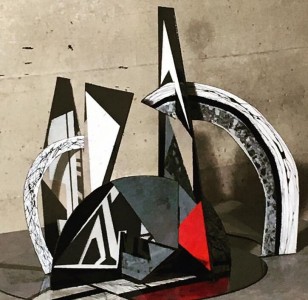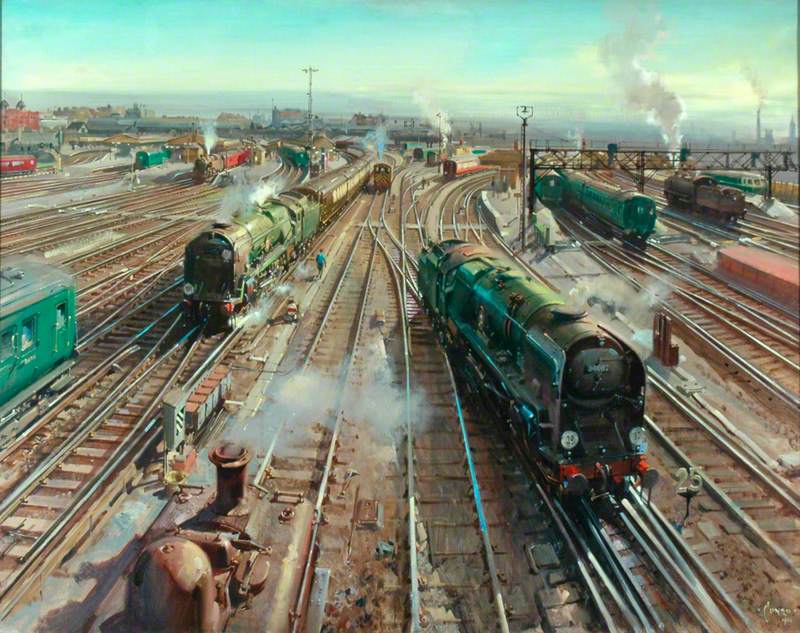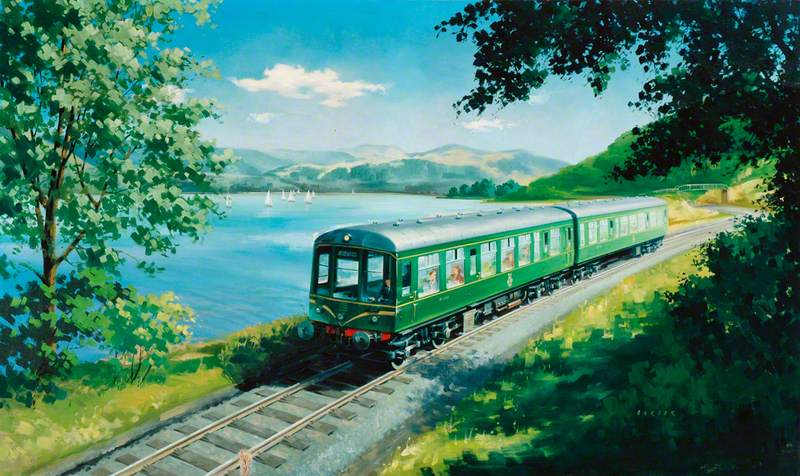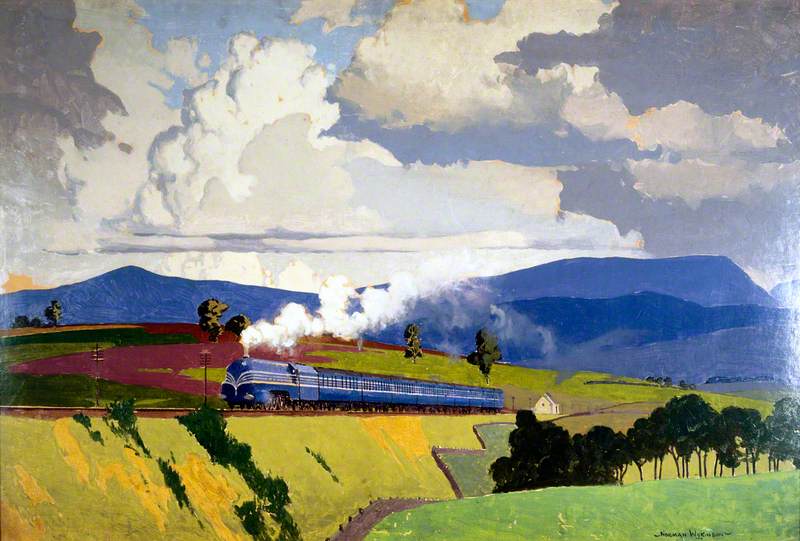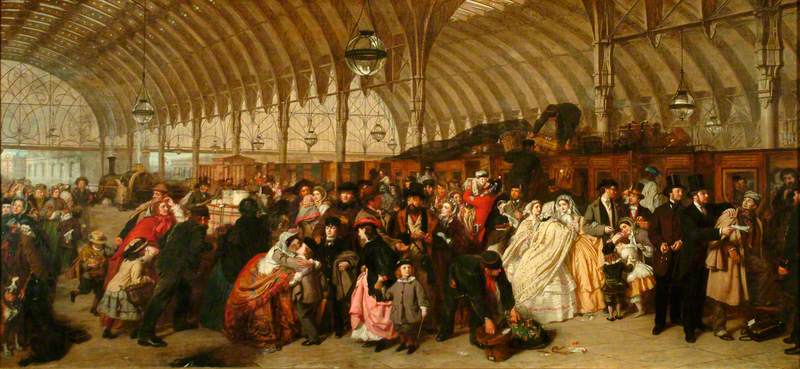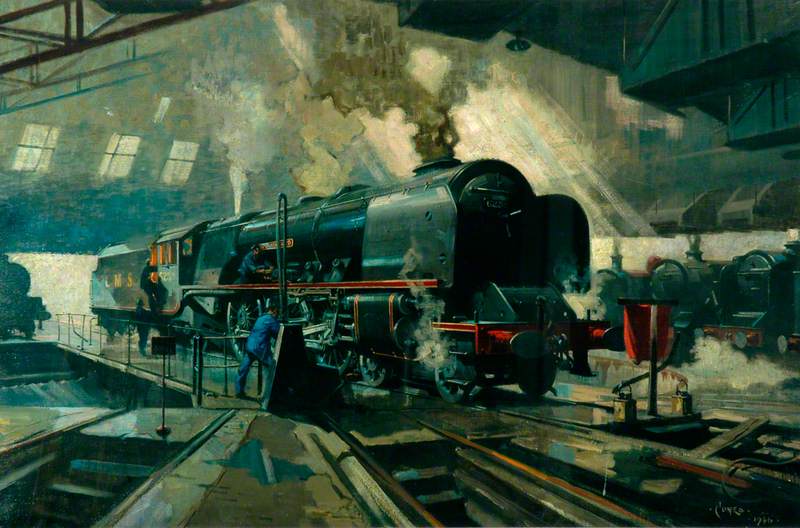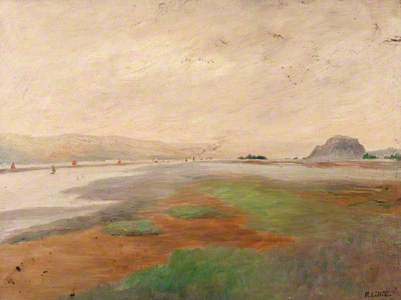This artwork is one of the top 20 UK railway artworks voted for by the public as part of Railway 200.
Celebrated for his exacting attention to detail and uncanny ability to imbue industrial subjects with drama and emotion, Terence Cuneo has become one of our best-loved railway artists.
While chiefly remembered for his love of the steam locomotives that appear in many of his works, notably from the twilight years of that form of transport, in his painting Blue Train at Bowling Harbour, the painter has been commissioned to capture the seminal change that came at the beginning of the 1960s – the electrification of rail lines.
Nowadays, there is an undeniable romance attached to steam power, as lovingly maintained classic locomotives provide huge draws on preserved lines throughout the UK or on occasional mainline excursions. The sounds, sights and smells of coal-fire engines create a sense of nostalgia even for those not around for their heyday.
It can be difficult, then, to appreciate the improvement in people's quality of life by the introduction of diesel and electric-powered units, a key step in the reduction of pollution and smog. Here, Cuneo celebrates the electrification of lines around Glasgow, a revolution in public transport that removed the noise and smuts generated by steam engines from the lives of those whose homes were along the Firth of Clyde.
To set the scene for this seismic shift, Cuneo uses as his stage the harbour at Bowling on the north bank of the River Clyde between Clydebank and Dumbarton. This West Dumbartonshire village already claimed a place in transport history as the western terminus of the Forth and Clyde Canal, which from the late eighteenth century enabled navigation between Edinburgh and Glasgow.
Bowling had joined the rail network in 1850 as a station on the Glasgow, Dumbarton and Helensburgh Railway, connecting these staging points between Scotland's largest city and the west coast, a region that included some desirable locales that were within easy reach of Glasgow yet away from its noise, crowds and industry.
Indeed, Sir William Burrell, the noted art collector and philanthropist, spent much of his childhood in Bowling. His wealthy family had made its fortune from shipping, with Burrell & Son originally founded as an agency for trade on the Forth and Clyde.
While the canal's importance to trade was largely superseded by rail during the nineteenth century, the Clyde itself remained an important route for goods in and out of Glasgow. Dominating transport on the river were the sturdy tugs known fondly as Clyde puffers, two of which can be seen in the right of Cuneo's composition. Bowling had a long history of shipbuilding and repair, thanks in part to its proximity to the canal. Alongside that, many tourists from Glasgow came on day trips or longer excursions for the area's fresh air and fine views.
By the late fifties, the North Clyde line was part of a network of routes in this region brought together by nationalisation. Their viability, though, was threatened by the post-war rise in bus travel and car ownership, plus the beginnings of the decline of Clydeside's heavy industry. To improve the sector's fortunes and attract the increasing numbers of commuters seeking easy access to Glasgow, part of the answer was to electrify certain lines and, in 1960, this route became one of the first to accommodate a brand new, locally made, locomotive – the British Rail Class 303 electric multiple unit.
Scottish Region 3-car EMU 303.016 at Milngavie in 1983
Known also as Glasgow Electric Units or Glasgow Blues, these were manufactured by the firm Pressed Steel at Linwood, near Paisley, and would dominate the city's suburban rail network for the next 25 years, with some still in service until 2002. State-of-the-art features included sliding doors and glass partitions behind the driver's cab that allowed forward views through his wrap-around windows, a boon as the service travelled through countryside beside the river, especially around picturesque spots such as Helensburgh.
In Cuneo's painting, his electric unit eases forward with confidence, its shiny royal blue exterior – a throwback to the paintwork of the steam engines run in a previous era by the Caledonian Railway – reflecting its status as a symbol of what Labour Prime Minister Harold Wilson would describe as 'the white heat of technology'.
The Glasgow Blue represents the smoothness and efficiency of the modern age: at the time, supporters of these new trains praised their high speed, swift acceleration and the sociability of open-corridor coaches without separate classes that replaced the former cramped compartments, allowing wider views of passengers' surroundings.
This lover of steam, though, has managed to include a more traditional engine, though here it is a comparatively drab locomotive in what appears a dreary brown livery, only partly visible in the left half of the composition.
Cuneo's attention to detail is also shown in a more minor, though no less important, sign of modernity – the electric signals that were introduced alongside the new service to replace the former semaphore-style signals. Here, its red light has been switched on in the typical lower position (opposite to the pattern on road traffic lights), calling the steam loco to a halt and possibly acting as a warning – the end of the line is ahead.
First published by British Railways Scottish Region, Blue Train originally appeared as a poster with the inscription 'Glasgow Electric, Travel by the Modern Railway'. In 1962, as such services were extended to the south of Glasgow, the advert was reissued with the engine referred to as the 'Helensburgh Electric', linking the modern train with that prominent destination on the line. This version, though, comes without any script, showing Cuneo's genius to full effect.
Chris Mugan, writer
This content was funded by Railway 200
About Railway 200
Railway 200 is a cross-industry, UK Government-backed, partner-led celebration of the 200th anniversary of the birth of the modern railway, commemorating the opening by George Stephenson of the Stockton and Darlington Railway in the North East of England in 1825, a journey that changed the world forever. It explores the past, present and future of rail, and how it has shaped our lives and livelihoods. Numerous activities and events are planned throughout 2025, many of which are listed at www.railway200.co.uk
